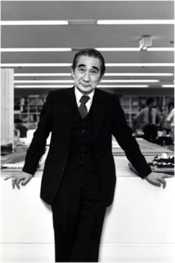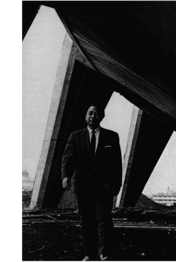History
 While the disciplines of Architecture and Civil Engineering in Japan date back to the late 19th Century, Urban Engineering is of relatively recent origin. Accordingly, the Department of Urban Engineering at the University of Tokyo was no earlier established than 1962. This was at the height of Japan’s high economic growth era, a period of the country’s most rapid and uncontrolled urban growth. Two master’s were pivotal for the establishment of the department and it’s research units.
While the disciplines of Architecture and Civil Engineering in Japan date back to the late 19th Century, Urban Engineering is of relatively recent origin. Accordingly, the Department of Urban Engineering at the University of Tokyo was no earlier established than 1962. This was at the height of Japan’s high economic growth era, a period of the country’s most rapid and uncontrolled urban growth. Two master’s were pivotal for the establishment of the department and it’s research units.
The first professor of the newly established Urban Design Labo was no lesser than TANGE Kenzo (1913-2005, photo top), the creator of such epoch making projects like the Hiroshima Peace Memorial (1955), the Tokyo Bay Plan (1960), the Yoyogi National Gymasium (1964), or the masterplan for the Expo Osaka ’70 (1970).
 The first professor of the Fire Prevention Laboratory at the University of Tokyo became TAKAYAMA Eika (1910-1999, photo bottom). Other than his colleague Tange --architect and master designer, who wanted to control his projects down to the last details-- Takayama was a different brand of urban designer. He saw himself more as a producer, coordinator and moderator, who would distill various ideas into a coherent urban vision. Those skills can be seen for example in the masterplans for the Technopolis Tsukuba Science City (1961), or the Komazawa Olympic Park (1964). For Takayama process was thus just as important as the final material outcome of a plan.
The first professor of the Fire Prevention Laboratory at the University of Tokyo became TAKAYAMA Eika (1910-1999, photo bottom). Other than his colleague Tange --architect and master designer, who wanted to control his projects down to the last details-- Takayama was a different brand of urban designer. He saw himself more as a producer, coordinator and moderator, who would distill various ideas into a coherent urban vision. Those skills can be seen for example in the masterplans for the Technopolis Tsukuba Science City (1961), or the Komazawa Olympic Park (1964). For Takayama process was thus just as important as the final material outcome of a plan.









